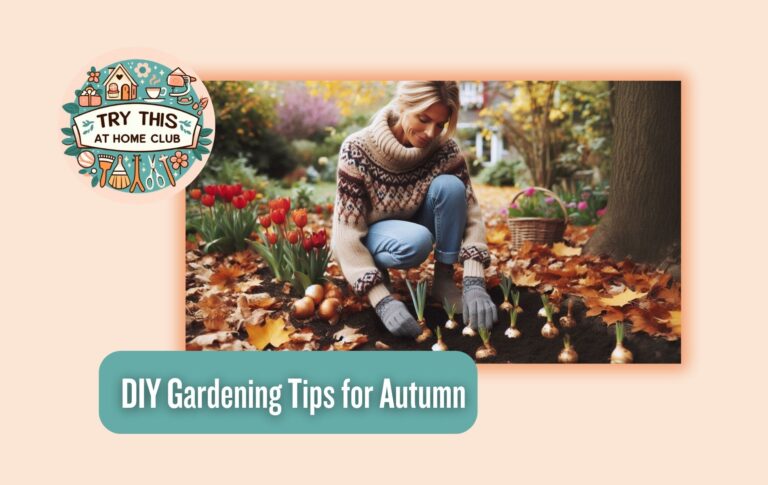Autumn is a magical time for gardeners. The crisp air and vibrant colors of the season bring fresh energy to your outdoor space. Whether you’re a beginner or have already dabbled in gardening, the cooler months offer the perfect opportunity to take on new, simple, and budget-friendly projects. This post will guide you through 10 DIY gardening tips for autumn that are easy to follow, affordable, and immensely rewarding. From preparing your garden for the upcoming frost to planting vibrant fall flowers, these DIY projects will not only improve your garden but also offer a satisfying sense of accomplishment. Let’s dig in!
Table of Contents
1. Prep Your Soil for Autumn Planting
Healthy soil is the foundation of any successful garden, and autumn is the ideal time to give your soil some love.
- Clean Up Debris: Remove old plant material and weeds from your garden beds. This prevents pests and diseases from lingering over winter.
- Add Organic Matter: Boost the health of your soil by adding compost, manure, or leaf mold. Organic matter improves soil structure, enhances water retention, and supplies essential nutrients.
- Mulch: Spread a layer of mulch (2-3 inches) over your garden beds to insulate the soil and protect plant roots from frost.
Taking the time to prepare your soil in autumn will pay off with a healthier, more productive garden come spring.
2. Plant Fall Flowers for a Burst of Color
Autumn doesn’t mean the end of vibrant blooms. There are plenty of beautiful, hardy flowers that thrive in the cooler months.
Some top choices include:
- Chrysanthemums (Mums): Available in a wide range of colors, mums are a classic fall flower that can brighten up any garden.
- Pansies: These delicate flowers are surprisingly tough and will continue blooming well into winter.
- Asters: These daisy-like flowers are perfect for adding some late-season color to your beds.
Tip: Plant your flowers in well-drained soil and make sure to water them regularly. A splash of color during the autumn months adds life and beauty to your garden, creating a charming seasonal display.
3. DIY Mulching: Protect Your Garden from Frost
Mulching is one of the simplest and most effective ways to protect your plants from the cold. Best of all, it’s easy to do yourself!
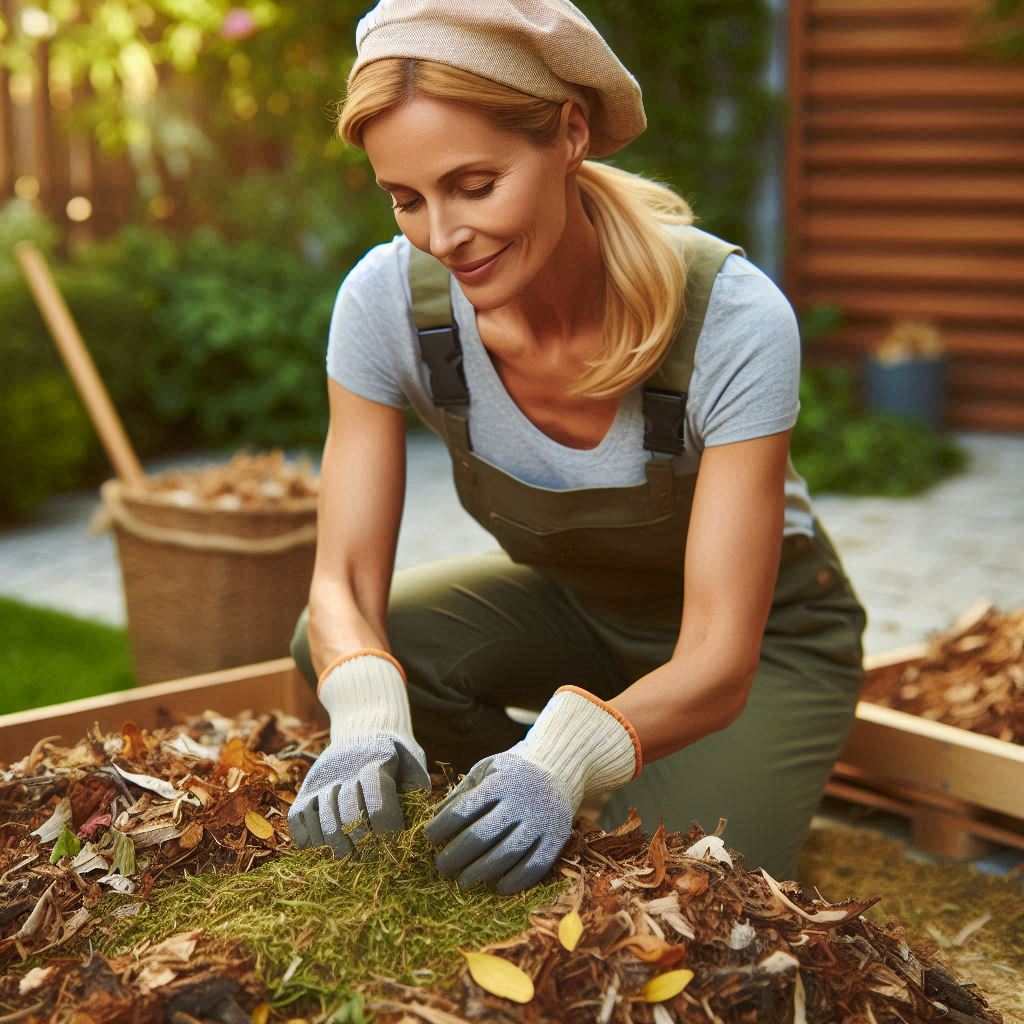
- Make Your Own Mulch: Gather materials like leaves, grass clippings, or shredded bark. Spread this organic matter around the base of your plants.
- Mulch Benefits: Mulch acts as an insulator, keeping the soil warmer and protecting plant roots from sudden temperature drops. It also helps retain moisture and prevent weed growth.
DIY mulching is not only affordable, but it also promotes healthy, strong plants that can withstand the challenges of autumn and winter.
4. Create Your Own Compost Bin
Composting is a great way to recycle kitchen scraps and garden waste into nutrient-rich compost that your plants will love.
Here’s how to make a DIY compost bin:
- Step 1: Find a space in your garden where you can set up a bin or create a compost pile.
- Step 2: Build a bin using wooden pallets, chicken wire, or a plastic container with holes for airflow.
- Step 3: Layer green materials (vegetable scraps, grass clippings) and brown materials (leaves, cardboard) in your compost bin.
Turn the compost pile regularly to speed up the decomposition process, and in a few months, you’ll have rich, dark compost to use in your garden.
5. DIY Cold Frame to Extend the Growing Season
Want to keep gardening into the cooler months? A cold frame is the perfect solution! It’s a simple structure that helps protect your plants from frost while still letting in sunlight.
Here’s how to make your own cold frame:
- Materials Needed: Scrap wood, old windows, or clear plastic.
- Step 1: Create a rectangular frame using the wood.
- Step 2: Attach the old window or plastic to the top of the frame, which will act as a lid.
- Step 3: Place the frame over your garden beds or containers to trap warmth and shield your plants from the cold.
With a cold frame, you can extend the growing season and enjoy fresh vegetables or herbs well into late autumn and early winter.
6. Plant Autumn Veggies for a Late Harvest
Autumn is the perfect time to plant cool-season vegetables that thrive in lower temperatures. If you’re looking for easy, beginner-friendly crops, try these options:
- Kale: A superfood that grows best in cooler weather.
- Carrots: Carrots develop a sweeter flavor when grown in the fall.
- Radishes: Quick-growing and ideal for beginner gardeners.
Plant these vegetables in raised beds or containers to ensure good drainage and easy access. Autumn veggies not only offer delicious, healthy meals but also a sense of gratification from growing your own food.
7. DIY Garden Markers with Autumn Flair
Personalize your garden and keep it organized with DIY garden markers. You can easily make markers that reflect the season’s beauty using natural materials:
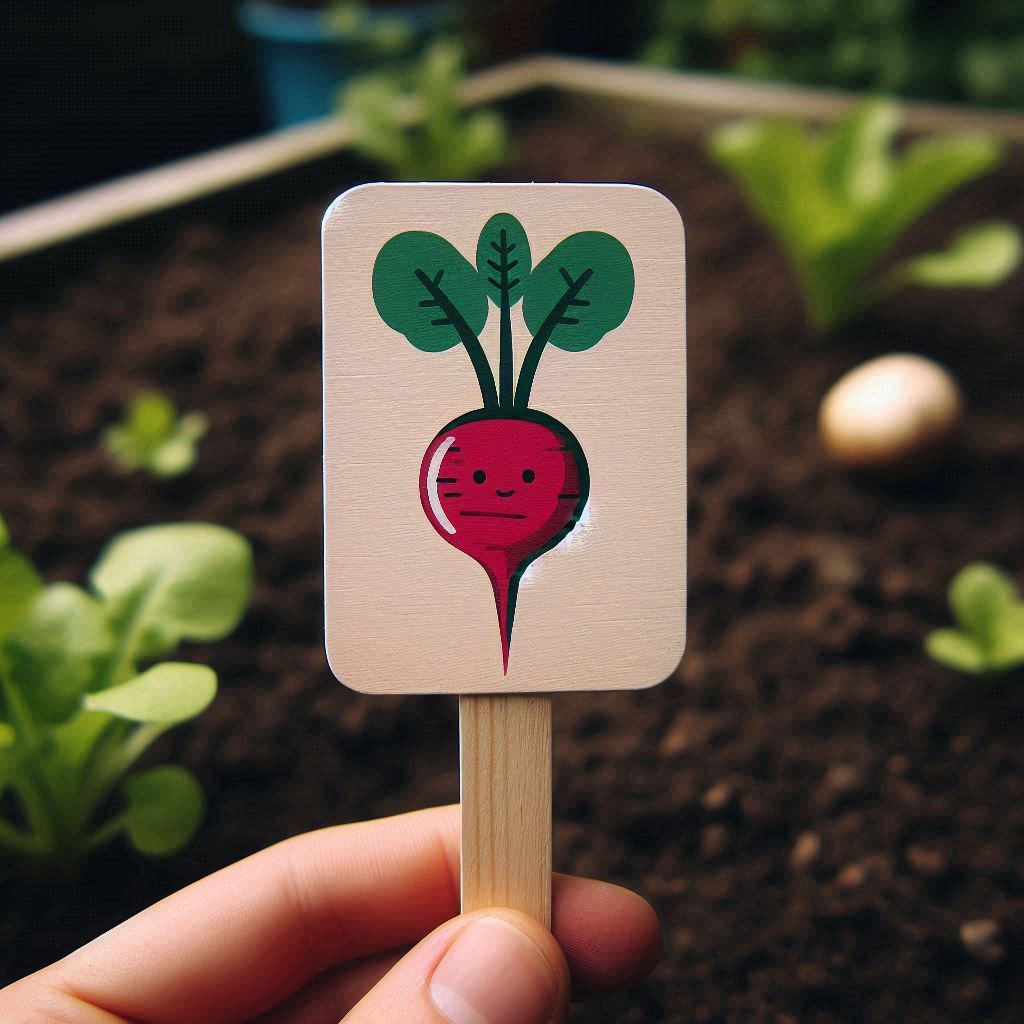
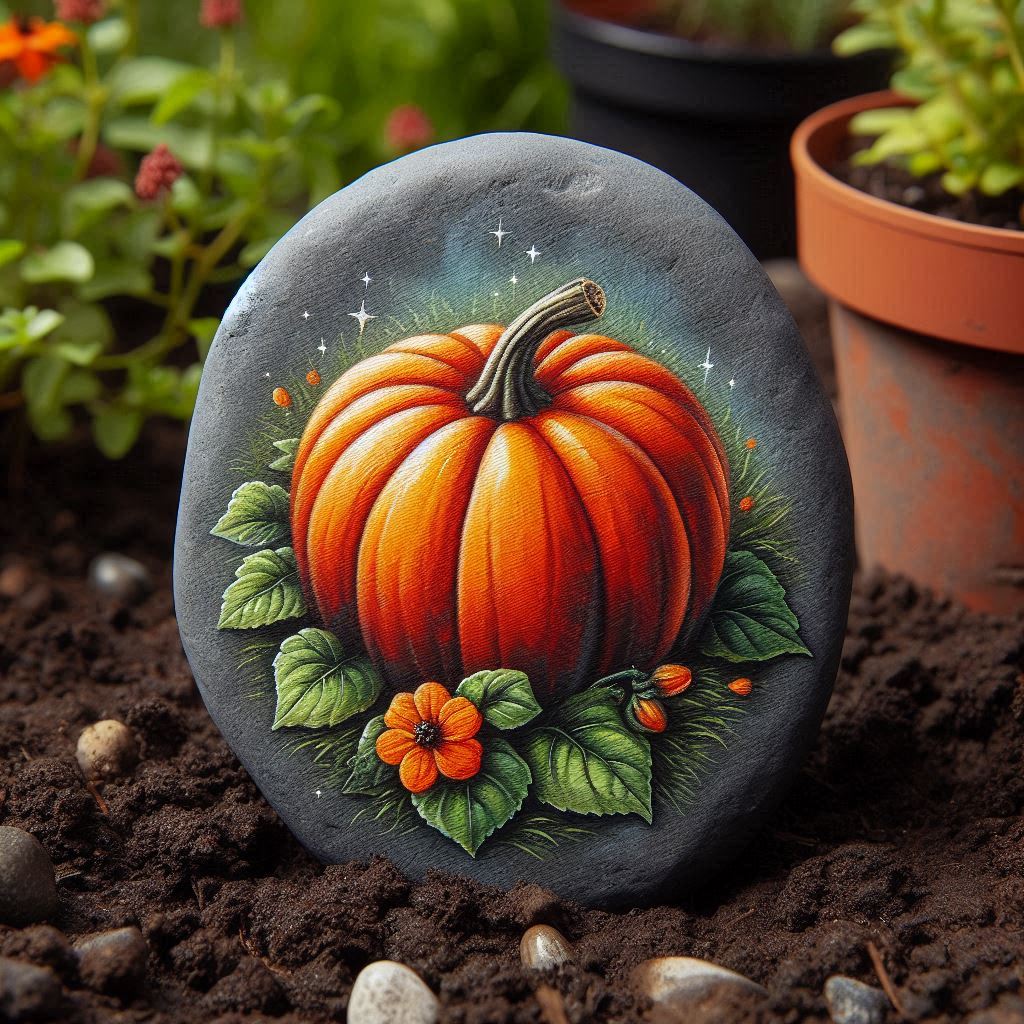
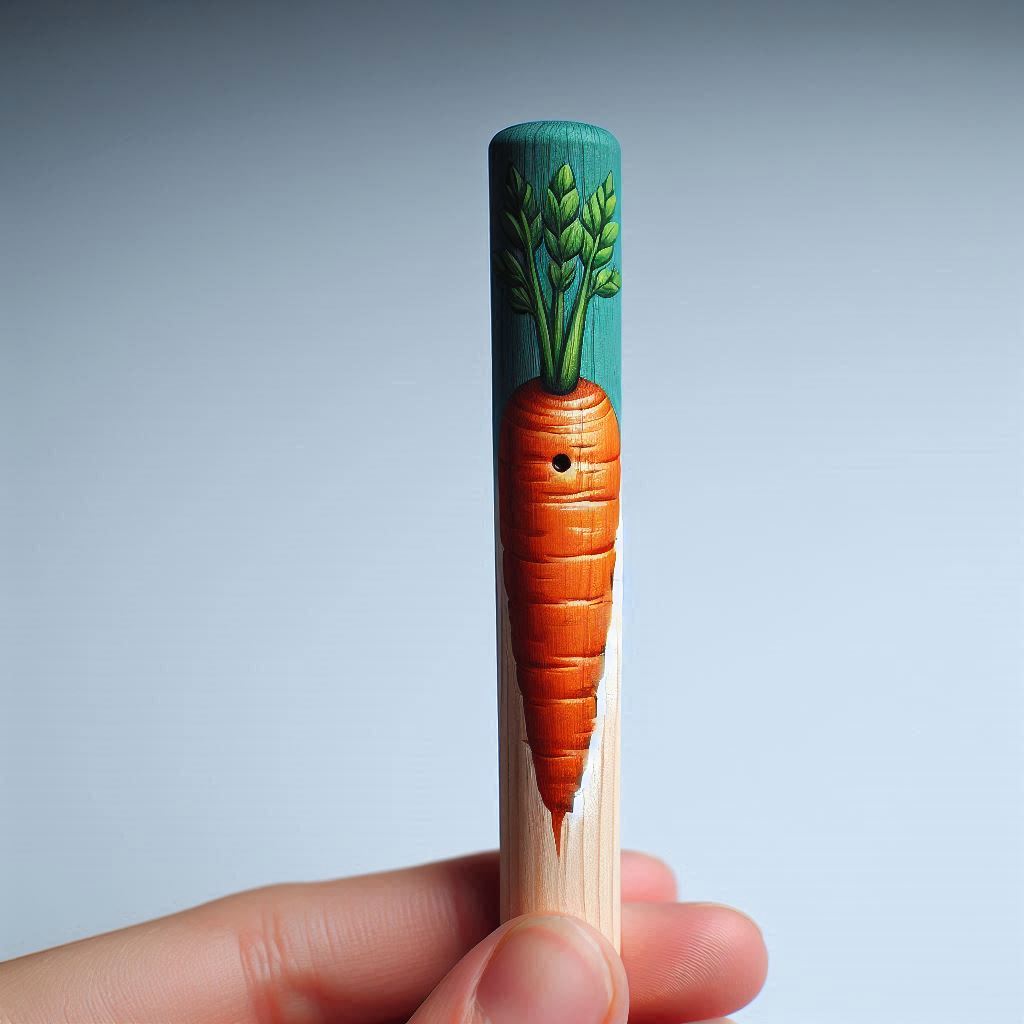
- Painted Stones: Collect smooth stones and paint them with the names of your plants.
- Wooden Sticks: Use twigs or popsicle sticks, writing or carving the names of your veggies and flowers on them.
This project is not only practical but also adds a touch of creativity to your garden, making it uniquely yours.
8. Use Fallen Leaves for Leaf Mold
Don’t throw away those fallen leaves! You can repurpose them into leaf mold, an excellent natural fertilizer for your garden.
Here’s how:
- Step 1: Gather fallen leaves from your garden.
- Step 2: Pile them in a corner of your garden or place them in a black plastic bag with holes for airflow.
- Step 3: Leave the leaves to decompose for six months to a year, turning them occasionally.
Leaf mold improves soil structure, helps retain moisture, and adds essential nutrients to your garden. Plus, it’s an eco-friendly, cost-effective way to reduce garden waste.
9. Create a Cozy Garden Seating Area with DIY Decorations
As the days grow shorter and the temperatures drop, you can still enjoy your garden by creating a cozy space to relax and admire your handiwork.
Ideas for creating an autumnal garden seating area:
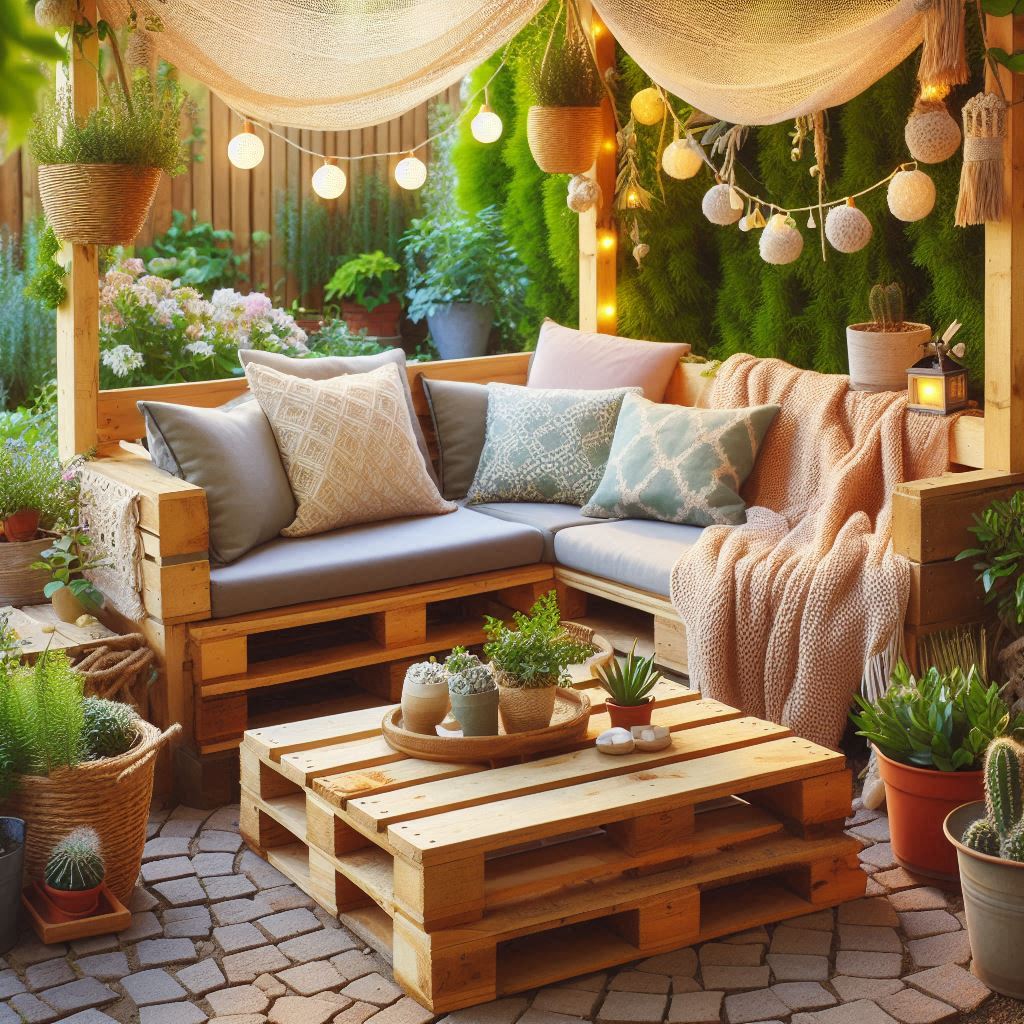
- Hay Bales: Use hay bales as rustic seating and add cozy cushions for comfort.
- DIY Lanterns: Place battery-powered candles inside mason jars filled with autumn leaves or pinecones for a warm, inviting glow.
- Wooden Pallet Furniture: Build a simple bench or table from pallets for an affordable seating option.
Adding these decorative touches creates a peaceful retreat where you can relax and enjoy your autumn garden.
10. Plant Spring Bulbs for a Rewarding Surprise
One of the easiest and most gratifying gardening tasks you can do in autumn is planting spring bulbs. Planting bulbs like tulips, daffodils, and crocuses in autumn ensures a stunning floral display in early spring.
Here’s how to plant bulbs:
- Step 1: Choose a sunny spot with well-drained soil.
- Step 2: Dig a hole that’s 2-3 times the height of the bulb.
- Step 3: Place the bulb in the hole, pointy side up, and cover with soil.
Water your bulbs after planting, and then wait for spring when they’ll reward you with beautiful blooms.
Final Thoughts on Gardening Tips for Autumn
Autumn offers endless opportunities for beginner gardeners to get creative and improve their outdoor spaces with simple, affordable, and gratifying DIY projects. From prepping your soil to planting hardy flowers and vegetables, these 10 DIY gardening tips for autumn will help you make the most of the season. Whether you’re building a compost bin or planting spring bulbs, you’ll enjoy the satisfaction of seeing your garden thrive.
So grab your gloves, head outside, and start creating your perfect autumn garden today!

